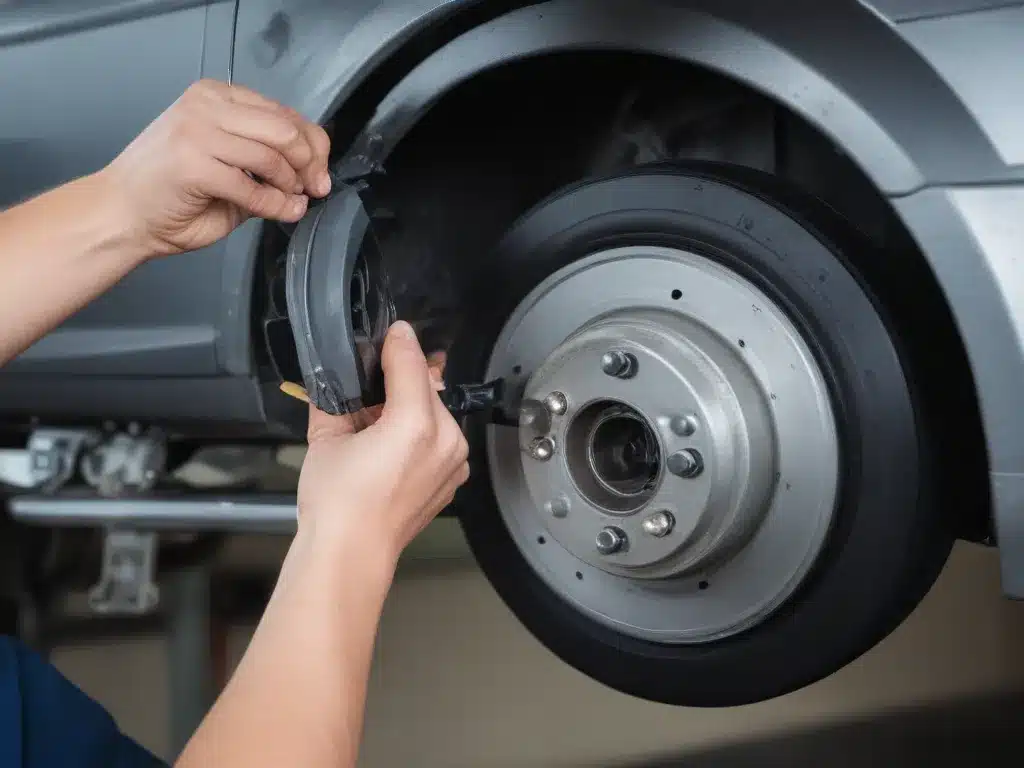
Pumping the Brakes on Old Fluid
As someone who loves their car like a second home on wheels, I know how important it is to keep up with regular maintenance. And when it comes to brake fluid, well, that’s one area you don’t want to skimp on. I mean, your brakes are kind of a big deal – they’re the only thing standing between you and a high-speed collision, am I right?
So, when should you change your brake fluid? Well, the general rule of thumb is to do it every 2-3 years, or whenever your owner’s manual recommends it. See, brake fluid is a bit of a tricky customer. It has a tendency to absorb moisture over time, which can seriously compromise its performance. And you definitely don’t want to be finding that out the hard way when you’re slamming on the brakes to avoid Granny crossing the street.
Now, I know what you’re thinking – “But my brakes feel fine! Why do I need to change the fluid?” Well, my friend, just because you can’t feel the difference doesn’t mean it’s not there. Imagine your brakes are like a glass of water – fresh, clear, and ready to quench your thirst. But over time, that water starts to get a little cloudy and stale, right? Same thing happens with your brake fluid. It may still be “working,” but it’s not nearly as effective as it once was.
Flushing Out the Old Stuff
Okay, so you’re convinced that a brake fluid change is in order. But how do you actually go about doing it? Well, my fellow car enthusiast, it’s a bit of a process, but trust me, it’s worth it.
First things first, you’ll need to get your hands on some fresh brake fluid. Make sure you get the right kind for your specific vehicle – checking your owner’s manual is a good idea. You’ll also need a couple of other tools, like a brake fluid catch container, some clear tubing, and a wrench or two.
Once you’ve got everything you need, it’s time to get to work. Start by locating the brake fluid reservoir, usually under the hood. Go ahead and pop that sucker open and take a look inside. If the fluid is looking a little murky or brown, it’s definitely time for a change.
Next, you’ll want to bleed the brake system. This involves pumping the brakes while simultaneously opening the brake caliper bleeder valves to flush out the old fluid. It’s a bit of a dance, but trust me, it’s worth it to get all that nasty, contaminated stuff out of there.
Now, here’s where it gets a little tricky. You’ll want to work your way around the car, starting with the wheel farthest from the master cylinder and working your way inward. This ensures that you’re replacing all the old fluid with the fresh stuff, from one end of the system to the other.
Flushing the System with Precision
As you’re bleeding the brakes, be sure to keep an eye on that catch container. You’ll want to make sure it’s clean and clear before moving on to the next caliper. And if you notice any air bubbles coming out, don’t worry – that’s just part of the process. Keep pumping and bleeding until the fluid runs nice and smooth.
Once you’ve made your way around the entire system, it’s time to top off the brake fluid reservoir with the new stuff. Just be sure not to overfill it – you want to leave a little room for expansion. And don’t forget to check your owner’s manual for the proper fluid type and quantity.
Now, I know what you’re thinking – “That sounds like a lot of work!” And you’re not wrong. Changing your brake fluid is definitely a bit more involved than, say, an oil change. But trust me, it’s worth it. Not only will it keep your brakes in tip-top shape, but it can also extend the life of your entire brake system.
Staying on Top of Brake Maintenance
So, there you have it – the ins and outs of a brake fluid change. It may seem like a hassle, but trust me, it’s one of those maintenance tasks that’s well worth the effort. After all, your safety (and the safety of everyone around you) depends on those brakes working at their absolute best.
Now, I know what you’re thinking – “But what if I’m not the DIY type?” No worries, my friend! There are plenty of trusted auto shops out there that can handle a brake fluid change for you. Just be sure to do your research, read reviews, and find a mechanic you can trust.
And remember, a brake fluid change is just one piece of the puzzle when it comes to keeping your car in tip-top shape. Don’t forget about other important maintenance tasks like oil changes, tire rotations, and engine tune-ups. Trust me, your car (and your wallet) will thank you in the long run.
So, what are you waiting for? Get out there and give those brakes the love and attention they deserve! Your life (and the lives of everyone around you) just might depend on it.


